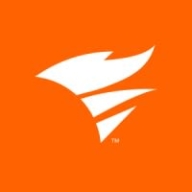

SolarWinds Pingdom and Azure Monitor are popular monitoring solutions with different strengths. SolarWinds Pingdom is preferred for its straightforward setup process, while Azure Monitor impresses users with its advanced features and integration capabilities.
Features: SolarWinds Pingdom users highlight valuable features such as REST API access, detailed uptime reports, and ease of alert configuration. Azure Monitor stands out with its broad cloud-native support, advanced analytics, and seamless integration with Azure services.
Room for Improvement: Users suggest that SolarWinds Pingdom could improve its feature set to cover more advanced monitoring capabilities and better scalability options. For Azure Monitor, user reviews indicate a need for simplifying its setup and offering more intuitive configuration options.
Ease of Deployment and Customer Service: SolarWinds Pingdom is praised for its quick deployment and accessible customer support. Azure Monitor, though perceived as more complex to deploy, offers extensive support and documentation.
Pricing and ROI: SolarWinds Pingdom is appreciated for its affordable setup costs and clear ROI metrics, making it attractive for smaller enterprises. Azure Monitor, despite higher initial costs, is seen as a valuable investment due to its comprehensive features and long-term benefits.
| Product | Market Share (%) |
|---|---|
| Azure Monitor | 3.3% |
| SolarWinds Pingdom | 0.5% |
| Other | 96.2% |


| Company Size | Count |
|---|---|
| Small Business | 23 |
| Midsize Enterprise | 7 |
| Large Enterprise | 29 |
Azure Monitor is a comprehensive monitoring solution offered by Microsoft Azure. It provides a centralized platform for monitoring the performance and health of various Azure resources, applications, and infrastructure.
With Azure Monitor, users can gain insights into the availability, performance, and usage of their applications and infrastructure. The key features of Azure Monitor include metrics, logs, alerts, and dashboards. Metrics allow users to collect and analyze performance data from various Azure resources, such as virtual machines, databases, and storage accounts.
Logs enable users to collect and analyze log data from different sources, including Azure resources, applications, and operating systems. Azure Monitor also provides a robust alerting mechanism that allows users to set up alerts based on specific conditions or thresholds. These alerts can be configured to notify users via email, SMS, or other notification channels. Additionally, Azure Monitor offers customizable dashboards that allow users to visualize and analyze their monitoring data in a personalized and intuitive manner.
Azure Monitor integrates seamlessly with other Azure services, such as Azure Automation and Azure Logic Apps, enabling users to automate actions based on monitoring data. It also supports integration with third-party monitoring tools and services, providing flexibility and extensibility.
Overall, Azure Monitor is a powerful and versatile monitoring solution that helps users gain deep insights into the performance and health of their Azure resources and applications. It offers a wide range of features and integrations, making it a comprehensive solution for monitoring and managing Azure environments.
SolarWinds® Pingdom® is a powerful and affordable SaaS-based web app performance monitoring solution. It’s one product providing comprehensive web app performance and user experience monitoring consisting of four major capabilities:
1. Uptime monitoring for webpages and other critical components like APIs, CDNs, DNS, networks, email, and more.
2. Page speed performance monitoring and page rankings.
3. Synthetic transaction monitoring from the simplest to the most complex transactions.
4. Real user monitoring (RUM), enabling a deeper and wider understanding of the user’s digital experience, and web application availability and performance.
We monitor all Application Performance Monitoring (APM) and Observability reviews to prevent fraudulent reviews and keep review quality high. We do not post reviews by company employees or direct competitors. We validate each review for authenticity via cross-reference with LinkedIn, and personal follow-up with the reviewer when necessary.